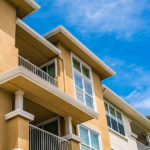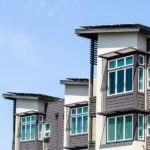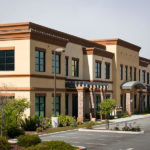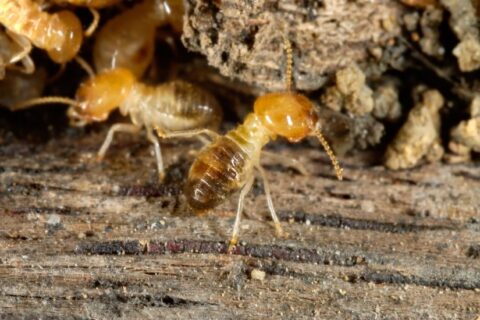Species of Termites Found in California
You may have heard that, worldwide, there are over 2,000 species of termites. Perhaps you’ve even heard that there are 50 species of termites living in North America. If you live in California, though, you are probably only interested in knowing the types of termites found in California. Because let’s be honest, most people don’t find termites that interesting and are primarily concerned with preventing a termite infestation in their own home. We hear you, and that’s why we wanted to share some important information about the types of termites you might encounter here in The Golden State.
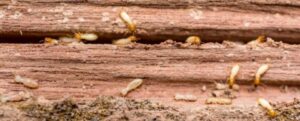
The three primary termite species in California are Drywood, Dampwood, and Subterranean. Of the three, subterranean termites do the most damage, because they work nearly 80 times faster than drywood termites. Drywood termites are the second most destructive to homes, with Dampwood termites primarily colonizing damp, decaying wood. Let’s take a look at these different species, their habits, signs of termite infestation, and what you can do to protect your home.
- Drywood termites are most active in California. They feed on anything made of wood, from furniture to picture frames to the wooden support beams that form the framework of a house. They enjoy warm, dry environments, and they do not need contact with soil or water. This can be a problem because, by the time the homeowner realizes there is a Drywood termite infestation, significant damage has likely already occurred. Drywood termites enter homes through gaps between wood members, cracks, weak spots on woodwork, necessary vents, and even utility entry points. They can fly into your home through windows and doors, or hitch a ride on furniture, particularly antiques.
- Dampwood termites nest in damp wood, rather than soil. They are large, with large pincers that allow them to eat through wood much more quickly than other species. Like Drywood termites, they can live entirely within the wood they are eating, but unlike Drywood termites, they need a significant amount of moisture to survive. They typically infest dead trees and stumps or felled timber, but they also infest parts of houses where high moisture levels exist. Gutters clogged with wet leaves can create a hospitable environment for them, and if you have a plumbing leak, ventilation deficiencies, or drainage issues, your home is vulnerable to this kind of termite.
- Subterranean termites do the most damage to homes and cost the most money of any California termite species. This kind of termite builds its nest underground and feeds on anything containing cellulose. Subterranean termites must remain in a moist environment, so they travel from their underground colonies in mud tubes, seeking food sources. They are likely to enter your home through these tunnels, though they can also fly in during the swarming season. Subterranean termite colonies can be quite large, and they can do a great deal of damage before a homeowner even realizes there is a problem.
There’s not really a termite season in California, because of the hospitable California climate. Rather, there is some type of termite swarming at any given time, all year long. To understand a termite swarm, you need some basic information about termite social structure. A termite colony is established by a king and queen, reproductive termites whose sole purpose is to produce more termites. They are very attentive parents at the beginning of their colony’s life, tending their babies until they grow up to be workers or soldiers. After the first round of termites has matured, the workers tend to the new larvae, feed the king, queen, and soldiers, build and maintain the tunnels within the nest, and forage for food. The soldiers protect the nest from attack, and the king and queen just keep producing more termites. Until the colony is established, there are only two reproductive termites. Once it is thriving, however, new reproductive termites, called alates, evolve and grow wings. They then fly off in a swarm, seeking mates with whom they will form new colonies.
If you see swarmers, then, you probably already have trouble. Termites don’t swarm very far from the original colony, so the presence of these flying insects means there is a well-established colony somewhere nearby. One of the signs of a termite infestation that homeowners often see is discarded wings. This is because once termites pair off, they ditch the wings and get down to the business of establishing their new home.
There are other signs to watch for, as well. Bubbled out paint, peeling wallpaper, hollow-sounding wood, and pinholes in wooden surfaces all indicate the presence of termites. If you have Subterranean termites, you are likely to find mud tubes on your exterior walls. If you have Drywood termites, you might see termite droppings, or frass, by small holes in your baseboards. Dampwood termites do not leave behind frass, but use it to seal the holes they’ve made and trap moisture in the wood. If you have Dampwood termites, you are likely to notice wood that is soft or squishy to the touch.
It’s best not to wait to spot these signs before you put termite prevention into place. Instead, homeowners should schedule an annual professional inspection, to make sure there are no signs of infestation they might have missed. A termite expert can help you determine what kind of termite treatment is needed in your home, whether it’s preventive or there’s already an infestation that needs to be eradicated.
If you are concerned you might have termites, it’s time to call the termite control professionals at MightyMite Termite Services. At MightyMite, we’ve earned a reputation as experts in California termite control. We perform termite inspections to ensure that your home is free of termites and work hard to help you keep it that way, using treatments that are naturally derived and have a low impact on the environment. We diagnose and treat infestations with the most effective methods and unmatched warranties, solving your termite problems the first time, with an industry best “no call-back rate.” That, combined with our experience, technology, and highly trained professional staff, makes us the leading extermination company in the Bay Area. We understand that your home is your most important investment, so we work hard to provide excellent service, utilizing best practices to solve our customers’ termite problems. For more information, email Info@mightymitetermite.com, call us today at 408.335.7053, or contact us through our website.

